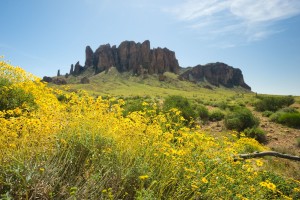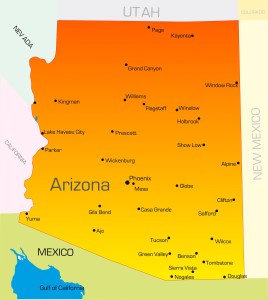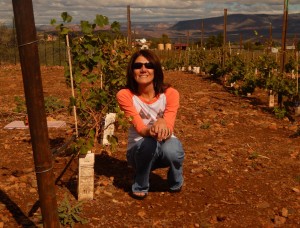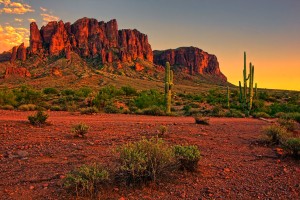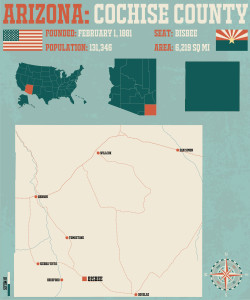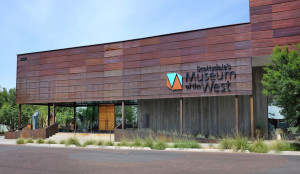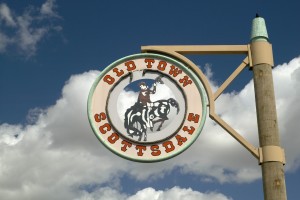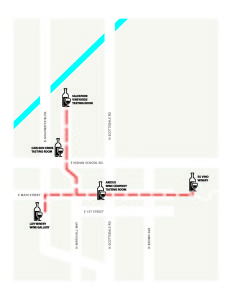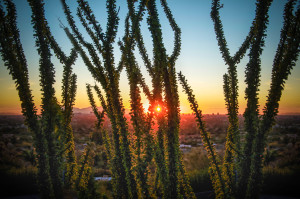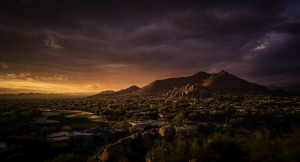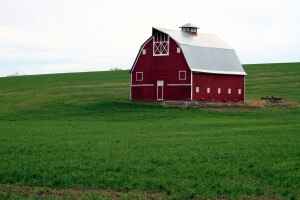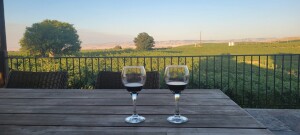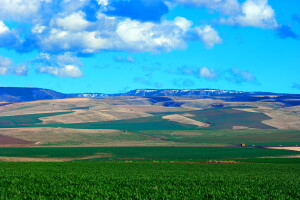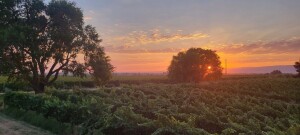Today we have a guest post from Darla Hoffmann, CSW. Darla tells us about a pointed conversation she had with two gentlemen in a wine shop. Well, a conversation she might have had…
While browsing the aisles of a local wine shop, I couldn’t help but overhear a conversation between two overly confident men. I heard one of them say “Arizona must be proud of their wines because they are awfully expensive. Do they even think they compare to California?”
Being a lover of Arizona wine, I had to be sure they had the facts. So, I said “Excuse me gentlemen, allow me to enlighten you on the wines of this beautiful State…
First, you should understand that from Prohibition until the 1980s it was illegal to make wine in Arizona. The young industry has sparked so much interest that supply fell somewhat below our demand. After all, youth can be exciting and innovative, but it still has its struggles.
Second, Arizona needs more fruit! Status-driven wine, winemakers’ experience, and newer equipment all take time to build, and the funding isn’t as prevalent as it is in many other regions. However, the growing recognition, along with the incredible agricultural base and culture, is driving an enormous amount of support and investment in Arizona vineyards. Maynard Keenan, vocalist for a Grammy Award-winning progressive metal band, has invested heavily in providing Arizona with the tools it needs to become a serious wine producing region. The University of Arizona and Yavapai College have teamed up and are quickly spearheading a strategic plan for our emerging wine industry. Wine is even playing an intricate role in Arizona’s tourism and economic development too!
There are three main wine growing regions, all lying in the majestic hills of the northern and southern parts of Arizona at elevations of 3,800-6,000 feet. Sonoita-Elgin is the oldest producing area and the only official AVA. These vineyards produce white, blush, and some of the spiciest, full-bodied robust reds in all of Arizona! The high desert mountain plateau enjoys a climate and growing season similar to Rioja, Spain. Furthermore, expert vintners have compared the soil to that of Burgundy, France.
The Willcox region produces reds, whites, sweet wines and dessert wines. Syrah and Sangiovese are popular varietals cultivated in the soil rich with ash from ancient volcanoes. The soils and the climate resemble the viticultural areas of both the Rhone Valley in France and Mendoza, Argentina.
Finally, the Verde Valley, north of Phoenix, is bursting with vineyard growth, fine restaurants, tasting rooms, and hotels. The volcanic past of the Verde Valley and the drainage of the Verde River has created a mineralized, slightly alkaline soil just challenging enough to produce distinctive flavors in grapes. Italian varietals like Malvasia, and Nebbiolo are just some of the grapes that experience excellence here. Long warm summers, cool nights and an old world style of winemaking make some of the finest rich full bodied wines. Similar to the South of France, Spain and Italy, the growing season temperatures can reach 100 degrees during the day but drop substantially at night.
With 942 acres under vine, growers use altitude to exploit the benefits of these sizeable diurnal temperature changes. It’s equally interesting to know that Arizona shares a similar latitude and range of microclimate, as that of Israel and Syria, which are growing tremendously as some of the most exciting wine producing countries in the world!
Arizona now enjoys 83 bonded wineries some of which are gaining national recognition. Some recent accomplishments include 2 wines earning 90 points by Wine Spectator: 2010 Page Springs Cellar’s Colibri Syrah Clone 174, and 2010 “The Burning Tree” Syrah from Colibri Vineyards. Both of these wineries are located in Southern Arizona.
Arizona Stronghold was also awarded the Class Champion Double Gold at the Houston Livestock Show and Rodeo™ 2013 Rodeo Uncorked! International Wine Competition for its 2010 Mangus, a Sangiovese blend.
So yes, Arizona is quite proud of their wines! However, like I said the industry does need more support. My hubbie and I adopted our own little Grenache vine at the Southwest Wine Teaching School to show our support. Go to southwestwinecenter.org to check it out. Lastly, since Arizona wines are quite young, we are not for certain how the wines will mature. This is a project for us all! I recently purchased 2 bottles each of Rancho Rossa Grenache 2008, Dos Cabezas El Norte 2011, Fire Mountain Erath 2011 and Pillsbury Diva 2013. My plan is to drink one bottle of each this year, and wait 5 years to drink the second bottle. Well, I’ll probably drink the 2008 in 2 years! Having shared that, I urge you to taste Arizona wines now, lay some down for later and explore all of the possible changes the future might bring to these wines!”
Whew. Ok, so I never really said any of this to the gentlemen in the wine shop. But thank you for letting me get it off of my chest!
Darla S. Hoffmann, CSW is the Sole Proprietor of About Wine in Phoenix, AZ. The focus of her business is wine education and marketing, i.e. tastings, classes and promotions. Darla is a Certified Specialist of Wine, Hospitality Beverage Specialist, and Professional Member of the Society of Wine Educators. She is a member of The Wine Century Club where membership requires having tasted 100 grapes. She is Basic Title 4 Certified under the Liquor Law Training of ABC.
Are you interested in being a guest blogger or a guest SWEbinar presenter for SWE? Click here for more information!
